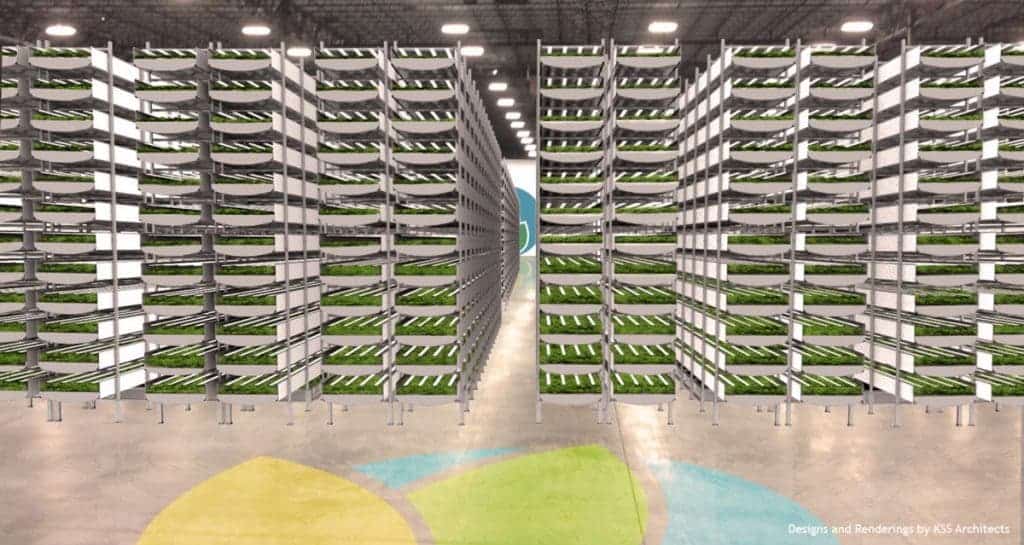A company called Aerofarms is trying to change the way we grow our vegetables in cities. They are building the world’s largest indoor vertical farm, just a commute away from Manhattan, and this is just the first step, they say.

The big innovation lies in what they call aeroponics. In aeroponics, the roots don’t need any soil, they simply dangle in the air (yes, plants can do that) and they are sprayed with water and nutrients. Aeroponics possesses many characteristics that make it an effective and efficient means of growing plants, including less need for nutrients, greater control of plant growth, and a lower overall price. It’s also more space efficient than conventional farming, which is why companies like Aerofarms are developing indoor farms using aeroponics.

Using a nutrient-filled mist and LED growing lamps, they will grow several varieties of salad greens, kale, and herbs throughout the entire year, without needing any sun. If everything goes according to plan, the 70,000-square-foot facility will be growing 2 million pounds of fresh produce every day. That’s a 75% higher yield than conventional farming.
Of course, there are expenses with the artificial LEDs and the facility itself, but these vertical farms will give 22 crop turns each calendar year. Also, because they take up vertical space instead of horizontal space, they are much easier to build in cities, which means reduced costs and emissions for transport, and urban citizens will be getting their vegetables much closer to the source.
But according to CEO David Rosenberg, this is just the beginning – the first step in a marathon journey.
“Our mission is to build farms in cities all over the world,” he told The Huffington Post. “We are very much building the infrastructure not to build one, two or three farms but to build 20, 30 or 50 farms.”
He added that there’s a “50 percent chance” for them to announce a new overseas project in 2016.
But not everyone is so optimistic.Stan Cox, a senior scientist at the nonprofit research group the Land Institute, offered in an essay for Alternet in February in which he writes:
Based on figures in a 2013 paper published by indoor plant-growth expert Toyoki Kozai of Japan’s Chiba University and on the assumption of efficient LED lighting, I estimate that plants like potato or tomato that produce a fleshy food product require about 1,200 kilowatt-hours of electricity for each kilogram of edible tissue they produce, not counting the water stored in the food.
That requirement approximates the annual electricity consumption of the average American home refrigerator — and that’s a big energy bill to produce just two and a quarter pounds of food dry matter. This kind of thing could not be scaled up very far.
Ultimately, we’re going to be dealing with an agricultural crisis of sorts, as the population continues to grow and shift its needs. Urban agriculture may very well play a key role in that, we just have to figure out the right way to implement it.
Was this helpful?



